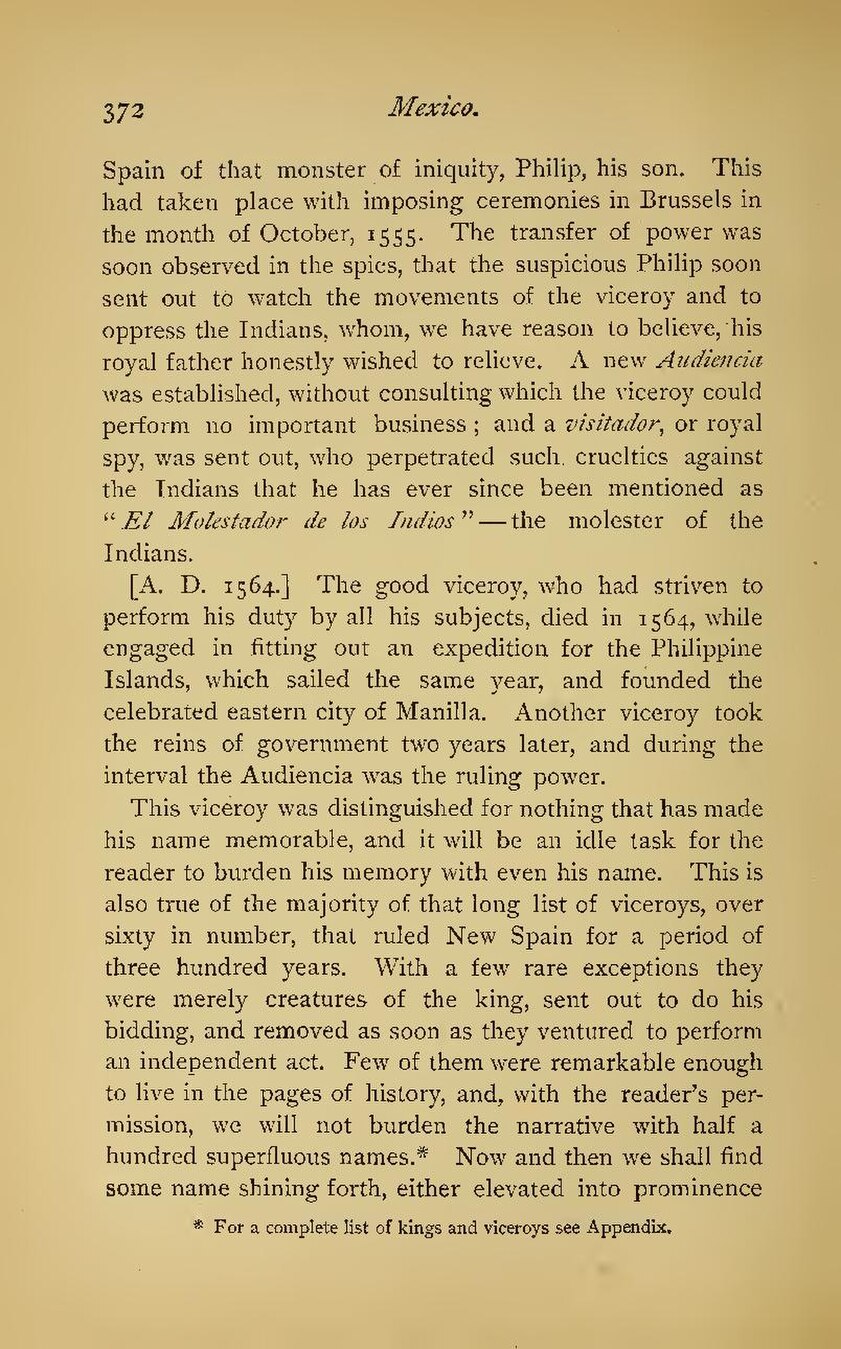Spain of that monster of iniquity, Philip, his son. This had taken place with imposing ceremonies in Brussels in the month of October, 1555. The transfer of power was soon observed in the spies, that the suspicious Philip soon sent out to watch the movements of the viceroy and to oppress the Indians, whom, we have reason to believe, his royal father honestly wished to relieve. A new Audiencia was established, without consulting which the viceroy could perform no important business; and a visitador, or royal spy, was sent out, who perpetrated such cruelties against the Indians that he has ever since been mentioned as "El Molestador de los Indios",—the molester of the Indians.
[A. D. 1564.] The good viceroy, who had striven to perform his duty by all his subjects, died in 1564, while engaged in fitting out an expedition for the Philippine Islands, which sailed the same year, and founded the celebrated eastern city of Manila. Another viceroy took the reins of government two years later, and during the interval the Audiencia was the ruling power.
This viceroy was distinguished for nothing that has made his name memorable, and it will be an idle task for the reader to burden his memory with even his name. This is also true of the majority of that long list of viceroys, over sixty in number, that ruled New Spain for a period of three hundred years. With a few rare exceptions they were merely creatures of the king, sent out to do his bidding, and removed as soon as they ventured to perform an independent act. Few of them were remarkable enough to live in the pages of history, and, with the reader's permission, we will not burden the narrative with half a hundred superfluous names.[1], Now and then we shall find some name shining forth, either elevated into prominence
- ↑ For a complete list of kings and viceroys see Appendix.
